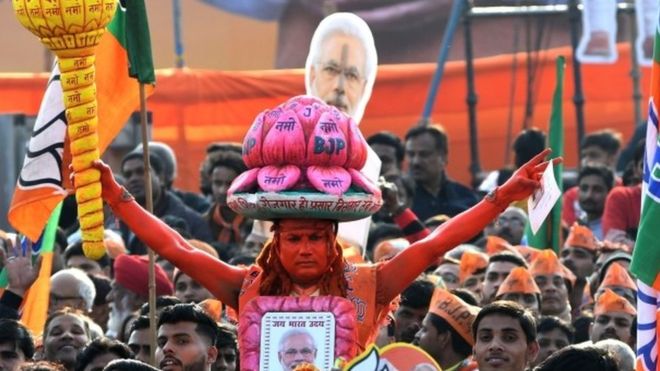Sabyasachee Dash
The convincing win of the Aam Aadmi Party in Delhi clearly suggests the BJP has failed to develop a story that the electorate could happily identify with. In about half a dozen assembly polls, the unfavourable outcomes for the BJP points, somewhere, to a clear distinction between national objectives and regional aspirations. The BJP’s strategy to bring in Prime Minister Narendra Modi as its star campaigner — to encash on his charisma — has ceased to work as a phenomenon.
Modi, no doubt, is the most iconic leader in contemporary Indian politics. Yet he represents a set of propositions that drive national ambitions or aspirations. His ‘typecast campaign that fits all states’ approach can prove fatal. This result may not have given party president JP Nadda a great beginning, but he has takeaways there for future elections.
Arvind Kejriwal deserves the entire credit for the victory, notwithstanding the fact that the disastrous performance of the Congress was among the prime reasons for consolidation of opposition votes in favour of the AAP. The Congress appears to have gone into hibernation. It has realised that people have clearly distanced themselves from the party and its politics, and that it is better to relax for now without regret.
Further, it makes no sense to mention the Left, which is visible only in a handful of state-sponsored learning institutions. Leftist parties have no footprint in mainstream Delhi politics.
One may love or hate Kejriwal, but one can never ignore him. He is a smart cookie, and has learnt from his own errors and possibly acknowledged the views of critics. He has worked on areas of improvement. He is no longer being an activist when entrusted with governance and has stopped targeting Modi in person.
In sum, the Delhi debacle of the BJP owes primarily to the absence of offerings that could have effectively countered those of the AAP. The level of material aspirations at an assembly election is far higher than what is seen at general elections. At general elections the macro picture matters. Not having a firm CM face worked against the BJP. Manoj Tewari may have been a great choice if the party were serious about attracting Purvanchali votes.
Merely deploying disproportionate quantum of resources is no guarantee of victory at an election. Its strategy must be so flexible that it is capable of being fine-tuned with emerging situations. It is evident that Delhi, as a city of migrants, is more concerned about day-to-day affairs rather than what is happening to the nation or what is in store for it in the next couple of years. Even people from UP, Bihar and Haryana did not import politics from their respective states. Lastly, people closer to the ground strongly believed though the BJP is a well-oiled machine, it underestimated Arvind Kejriwal’s model. The message is loud and clear: You may disagree but not disrespect.
The BJP-led government at the Centre, in charge of managing 130 crore Indians, needs to be really careful about every state that goes to polls for the simple reason that in our constitutional scheme of things — be it state government and consequential composition of the council of states (Rajya Sabha) — has a defining bearing on the way legislative actions are undertaken. In other words, having the majority in the Lok Sabha is just not adequate.
Therefore, it is inevitable that there is adequate alignment between states and the Centre and, considering the current political environment, it is primarily the BJP versus others. Thus, the former has to ensure that it retains expanded ground as originally envisaged by the saffron party when it came to power in 2014.
This can be achieved only when the party freezes its “go-to-election” strategy after it is convinced that the probability of winning is much higher. Ironically, oppositions may prefer to perceive this result almost as a referendum against the current regime, but it barely resonates with reality in the Indian context.
The writer is a chartered accountant.






































